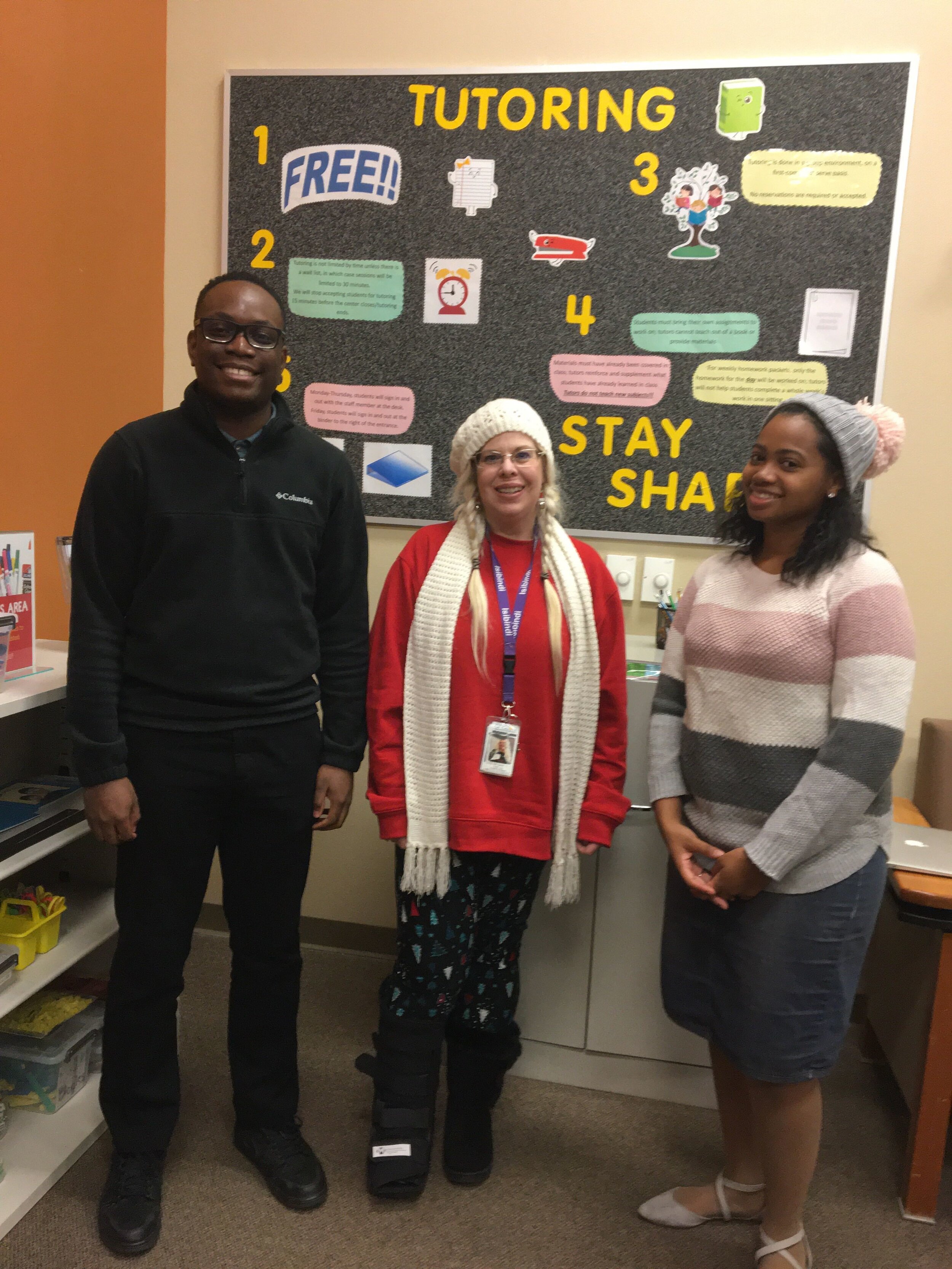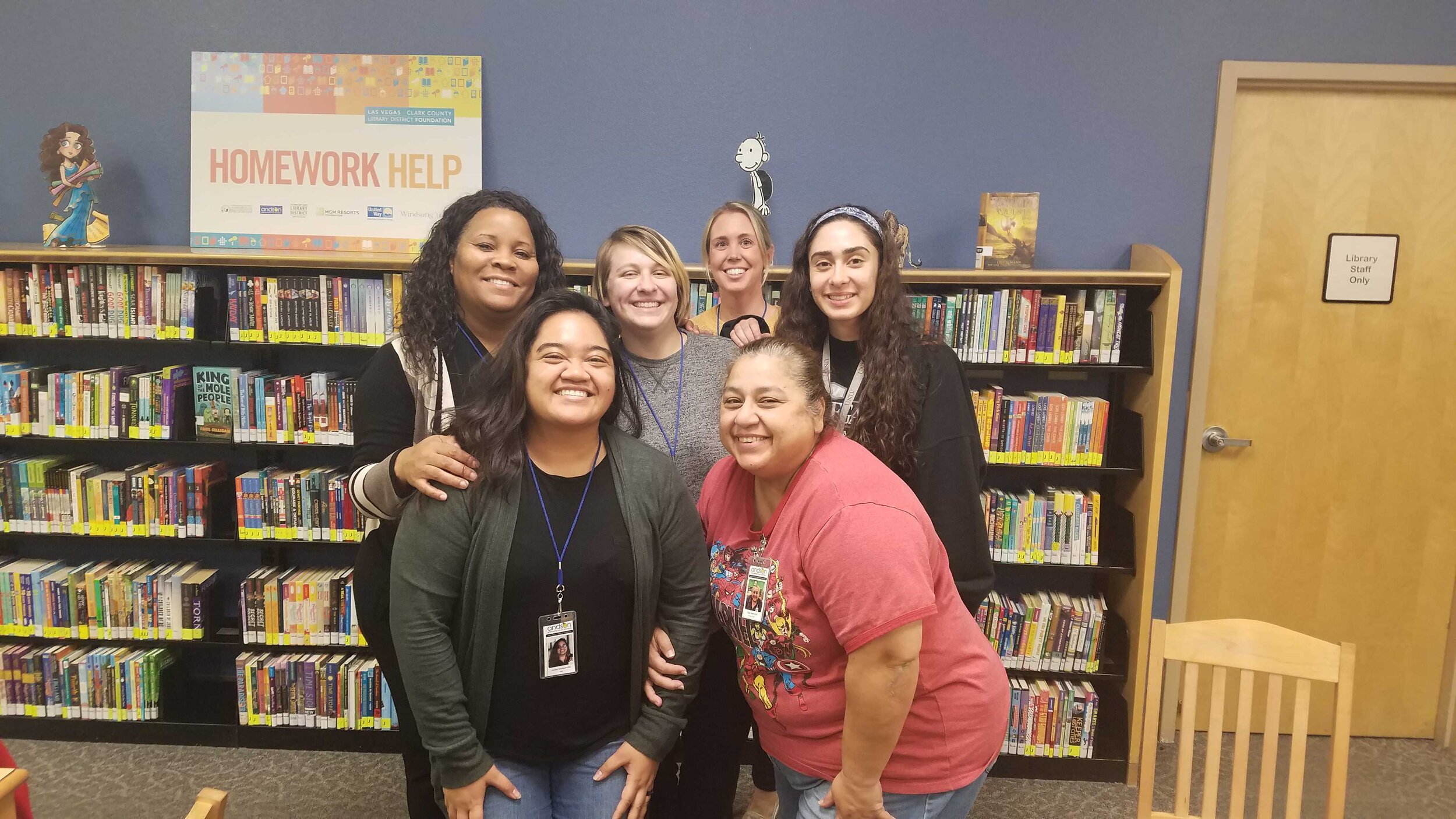In 1953, Eleanor Roosevelt persuaded Congress to create the first National Teachers’ Day. Then in 1980, Congress officially declared March 7th as National Teacher Day. Then, and five years later, in 1985 the National Parent Teacher Association (PTA), established Teacher Appreciation Week as the first full week of May.
The National Education Association calls this, “A day for honoring teachers and recognizing the lasting contributions they make to our lives.”
In celebration of the end of Teacher Appreciation Week, here are some stories and advice from some of our Andson tutors and teachers who provide free after school tutoring at Clark County Libraries in Las Vegas.
“My favorite thing about tutoring for Anson is getting to meet new students and watching them learn something new. I’m looking forward to spending a lot more time helping students grow and learn. My day job is working with students with autism for the Clark County School District. When I’m not tutoring, my favorite thing to do in Las Vegas is to go out and try new restaurants and find fun new things to do around town. My advice to students when they come into tutoring is to be ready to learn. The team and I are here to help you grow and we are excited to watch you succeed in your educational goals and challenges.” – Kim at Whitney Library
“I have been tutoring with Andson for over 6 years. I love being able to work with a wide variety of age groups and needs representing a large number of different schools. It’s interesting to see the expectations of one school versus another at the same grade level. I also love seeing the growth in students who have been coming to us since our site opened. What a difference knowing that our Whitney staff has contributed to this student growth is very rewarding!” – Pam at Whitney Library
“I’ve been with Andson for 4 and a half years. I like teaching students using real world situations and memes. Our team is the best team I’ve ever worked with. They’re supportive, cooperative, and most of all, empathetic.” – Angela K. at Rainbow Library
“I enjoy the interactions with the youth. I've always appreciated working with young people. Tutoring mathematics also keeps me "with it." I enjoy the challenges that come to my table! When I’m not tutoring, my favorite thing to do in Las Vegas is to go to concerts. I love music. My advice to students is to come prepared to think and work. Bringing notes from class is helpful for the upper grades.” – Tamplyn at Centennial Hills Library
“I’m a retired preschool teacher and director and I feel lucky to be on such a good team at a very good library. The team is always nice and nurturing. My advice to students is to do your best work. We are here to help you and guide you.” – Bobbi at Rainbow Library
Don’t forget today is the last day to enter the SSSCU drawing for a chance to win $1,000! In honor of #TeacherAppreciationWeek our partners at Silver State Schools Credit Union are doing a Visa gift card giveaway to 3 lucky Southern Nevada teachers! You do not need to be a credit union member to enter the drawing. Submit now for a chance at $1,000!
And here’s a list of hundreds of discounts offered to teachers on school supplies, clothing, food, and more!




















